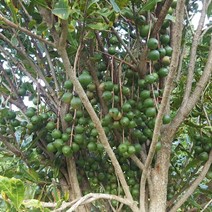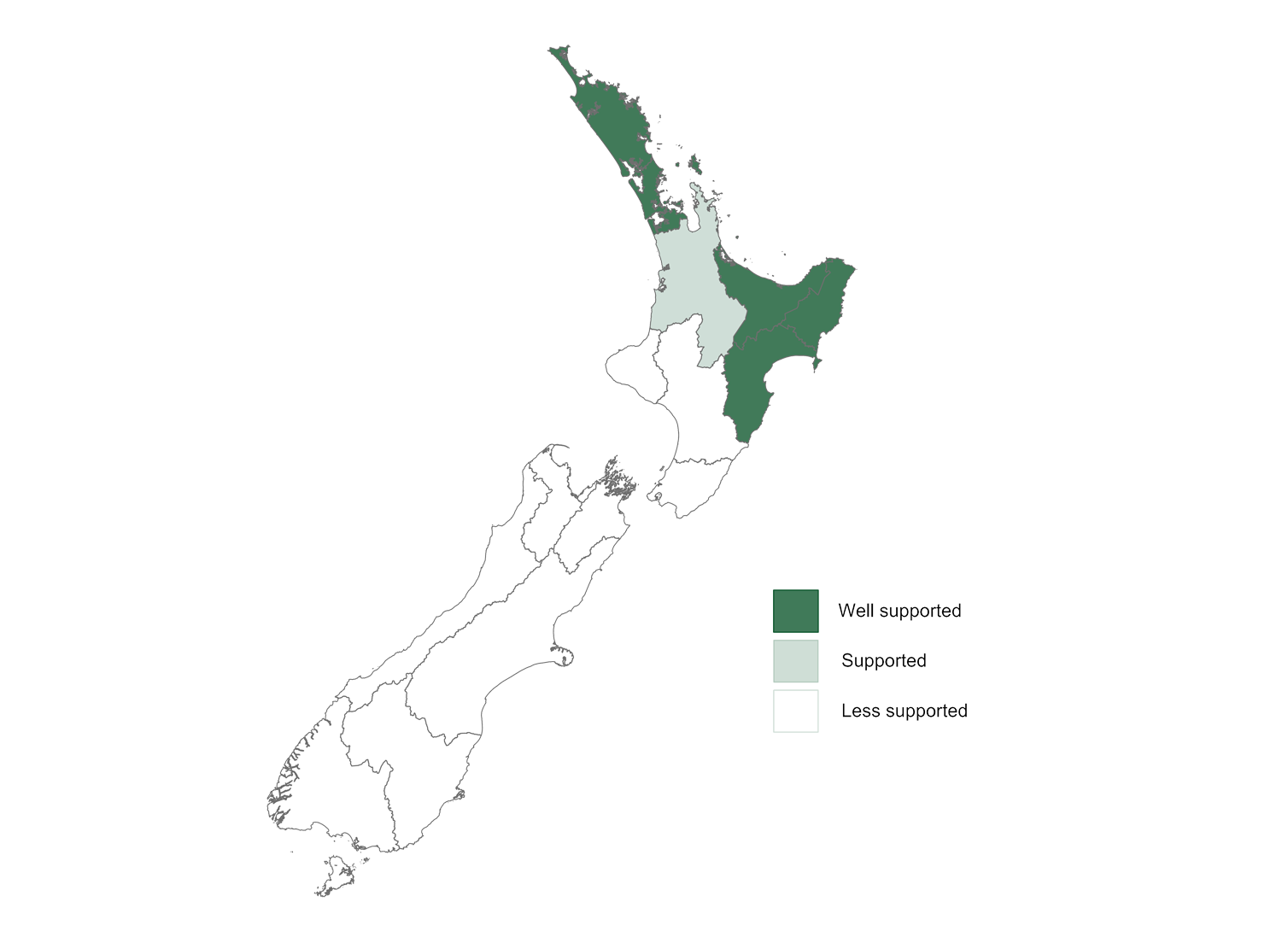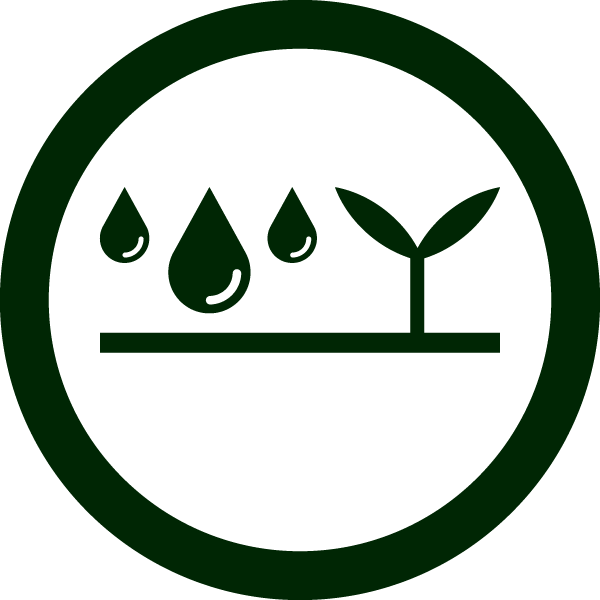
Land use fact sheet
Macadamia nuts
Macadamia nuts have been grown commercially in New Zealand since the 1970s. There are lots of commercial varieties to choose from, including early, mid and late season croppers which allows growers to spread out labour and income peaks.
The industry is working hard on building its business capability. A grower's cooperative is being launched to expand the local and international market and provide opportunities for growers all over the country to access distribution channels.
 Overview
Overview
Regions
Bay of Plenty, parts of the Waikato, around the East Coast and throughout the Coromandel, Auckland and Northland.
Growing conditions
Macadamias need well drained soils, shelter from wind and protection from frosts. They thrive in warm coastal areas.
Climate
Macadamias are surprisingly drought-tolerant for a rainforest plant, but they cannot cope with cold frosty conditions.
Commercial scale
3 hectares for a standalone operation. 1 hectare if you can share harvesting, husking and shelling infrastructure.
Getting started
Different varieties are harvested at different times. They also have different harvest and maintenance requirements.
Skills / employment
Plan for one staff member per 3 hectares. Employees should be familiar with Mac Accreditation standards.
 Regions
Regions
Macadamias thrive in warm, wet coastal areas and they are surprisingly tolerant to dry conditions.
The industry is well-established in the regions that provide these conditions, especially Bay of Plenty, Northland and Auckland. There are also successful operations in the Coromandel, around the East Coast and in parts of Waikato.
Get a report on your whenua
Enter the details of your whenua into our search to create a downloadable report showing information about the environment, economy, and climate in your region — and the potential that creates for development.

 Commercial scale
Commercial scale
Commercial scale starts at 3 hectares for a fully independent operation that includes all of the infrastructure needed for harvesting, husking, drying and shelling the nuts.
A 1ha orchard can be profitable if you are able to share or hire the infrastructure.
Each hectare grows around 500 trees on average. This can vary depending on your orchard design and management practices.
 Getting into the industry
Getting into the industry
Commercial varieties
Commercial varieties available today can be categorised as pre-2000 and post-2000.
Pre-2000 varieties have been available for a number of years and were widely planted through the 1980s and 1990s.
Post-2000 varieties were imported into New Zealand around 2000. The new varieties introduced a range of advantages, including higher yields, higher oil content, resistance to Green Vegetable Bug, thinner shells, larger kernels and a larger percentage of whole kernels after the nuts are cracked. Torere Macadamias currently have the exclusive rights to sell post-2000 varieties in New Zealand.
Consider whether you want dropping varieties, meaning the nuts drop to the ground when ready, or picking varieties, that need to be picked from the tree when they are ready for harvest. Your nursery can advise how the different types need to be managed.
Planting a mixture of early, mid-season and late varieties improves pollination and makes it possible to extend fruiting from April through to December.
If you have an established orchard with low-yielding varieties, you can choose to top graft with a newer, more productive variety.
It is worth putting some time into researching the best varieties for your orchard. Speak to a commercial nursery and make contact with the grower organisation, the New Zealand Macadamia Society, for advice.
Macadamia Society contact details
Macadamia Society industry contacts
Development costs
Development costs for a new orchard using post-2000 varieties are around $24,000 per hectare. This includs 500 trees per hectare, labour costs for planting and basic land preparation.
Harvesting and handling
Depending on the variety, nuts will either drop to ground or need to be picked from the tree when ready for harvesting.
Both types are harvested when they are still inside their tough, fibrous husk, which wraps around the shell and connects the nut to the tree.
The husk needs to be removed as soon as possible and within the first few days, or the colour and taste of the nut will deteriorate.
Once the husk has been removed, the nuts, still in their shells, are air dried in the shade for at least two weeks. They can be transported to a processor when the kernels have dried down to 12% moisture. They will be further dried to 2% moisture before being cracked and processed into a retail product.
Equipment and machinery
You will need to have equipment for collecting the nuts, whether you are picking from the tree or collecting them from the ground.
Varieties that drop to the ground when ripe can be collected by nut harvesters. These can be small machines that are pushed along the ground by a person, or larger pieces of equipment that are attached to tractors.
If you have picking varieties, you will need picking bags and step ladders or cherry pickers, depending on the size of the trees.
Nuts need to be dehusked in the first few days after collection. Most growers will use a husking machine for this step.
Cracking machines are also widely available, but if you are cracking and processing your nuts yourself it is important to be aware of your compliance obligations under the Food Safety Act.
Selling your nuts
Many growers choose to sell their nuts to processors as 'nut in shell' (NIS) because this option has the lowest overheads. NIS nuts have had the husk removed then been dried in the shell to 12% moisture before being transported to the processor.
Higher returns are possible if you are selling whole kernels that have already been removed from the shell, also called Sound Kernel Recovered (SKR). The highest prices are achieved for whole unbroken kernels.
You can pay a processor to crack the nuts and remove the kernels for you, or you can do this inhouse if you are able to invest in the processing equipment and meet the Food Safety Act requirements.
Whether you are selling NIS or SKR you will need to find a buyer for your product. You can sign a supply contract to sell your nuts to a processor, or set up your own distribution channels to sell directly to the retail market. A new co-operative of growers in the Bay of Plenty will provide a third option later in 2020, when they will start taking nuts from around the country.
Support for new growers
It is important to get experienced, qualified advice in the early stages of any development.
Torere Macadamias, based in the Bay of Plenty, run monthly field days for both new and established growers to advise on varieties, growing and selling macadamia nuts. They also have sole rights to sell the new generation of commercial varieties. You can find out more about the new varieties, how to grow macadamias and information about field days and work shops on their website. The New Zealand Macadamia Society also provides support for new and existing growers.
 Skills and employment
Skills and employment
The number of staff you need depends on the size of your orchard and your expected harvest yield.
Most owner-operators can manage a Macadamia orchard of 3-5 ha without needing to employ additional permanent staff. Temporary staff will be required for harvesting. They will also be needed for processing, if you are processing onsite.
All employees should be familiar with the New Zealand Macadamia Accreditation Standards, which are defined and administered by the New Zealand Macadamia Society.
 Compliance
Compliance
As with any business, there are compliance regulations in regard to health, safety and wellbeing, employment law and tax obligations. Some of the key industry-specific compliance obligations are listed below.
Levies
There are no compulsory levies for macadamia growers.
You can choose to join the industry organisation, the New Zealand Macadamia Society, who provide a wide range of support and resources for members. You can find out more about benefits, the cost of joining and download a membership form from their website.
New Zealand Macadamia Accreditation Standards for quality kernel (MacAcc)
The New Zealand Macadamia Accreditation Standards for quality kernel (Mac Accreditation or MacAcc) are a set of industry-developed standards for good orchard and processing practices.
MacAcc is intended to establish a quality symbol in the macadamia nut market, where MacAcc growers can be associated with a reliably high quality product.
The New Zealand Macadamia Society intends for all member growers to be Mac Accredited.
New Zealand Macadamia Accreditation Standards
Food safety
All growers must meet the requirements of National Programme 1 under the Food Act 2014 to ensure that the nuts being supplied to the market are safe to eat.
Council regulations
Many councils require consents for access to irrigation water and for other activities related to changing land use.
Speak to your local council before investing in any detailed planning or other work to ensure you are aware of any consents or permits needed to develop an orchard on your whenua.
Meeting council compliance obligations
National policy statement for freshwater management (NPSFM)
The National Policy Statement for Freshwater 2020 gives local authorities direction on how they should manage freshwater under the Resource Management Act 1991. As such, some local authorities require growers and farmers to create a Farm Environment Plan (FEP). Make sure you're familiar with the FEP expectations in your region. Check with your local council about the requirements for your whenua or planned development.
Even if your region doesn't yet require an FEP, it's good practice to put one in place for your whenua as part of your business plan. The Foundation for Arable Research (FAR) provides templates you can use to create an FEP.
 Growing conditions
Growing conditions
Macadamias will grow in a range of soils as long as they are well-drained and have shelter from windy conditions.
Young trees should be supported by staking. They also need to be protected from frost and have access to irrigation for at least the first two years if there is any risk of the soil drying out. Mature trees do not usually need irrigation unless the soil is very sandy and porous.
Slope has no effect on the growth of the tree but it does constrain the use of machinery such as mowers and mechanical harvesters.
Young trees will often blossom and produce a light harvest within the first three years, but it is good practice to strip these blossoms and let the tree focus on developing root structure and vegetative growth. The first harvest will then take place in year four.
Growers can plant a cover crop such as hay or hemp in the rows between the trees to provide some income during the first three years when there is no commercial crop. Keep the growing area at least 1 metre away from the young trees to prevent the cover crop from competing with your macadamia trees.
 Climate
Climate
Macadamias are originally a rainforest plant so they thrive in warm, wet coastal areas. They are surprisingly tolerant to dry conditions but are not suited to cold climates.
 Water
Water
Irrigation may be needed for the first two years, depending on your soil and rainfall. It is not usually needed after that unless the area is very dry or the soil has very little water holding capacity.
 Market
Market
The macadamia industry has shown strong growth, driven by a solid business development approach from within the industry.
A new national grower co-operative currently being developed will take nuts from all growing areas, providing a coordinated approach to product and market development activities.
 Future industry
Future industry
Industry development
Macadamias are an attractive option for many land owners because they provide an opportunity to get an income from a low maintenance, low-environmental impact land use.
The demand for macadamia nuts in New Zealand creates excellent opportunities for growth. Each year, more imported nuts are sold in New Zealand than nuts that are locally grown. For this reason, the local industry is focused on:
- increasing the amount of nuts grown in New Zealand, and
- improving market access, making it easier for growers to get their nuts on the shelves for retail customers to buy.
Industry goals to 2028 are to
- increase national production to 825 tonne of kernel per annum
- increase the number of growers to 750
- diversity into high value-add products including cosmetic and skincare products, and
- establish an export market
Intensification
The current commercial rootstock, Beaumont, has a vigorous growth habit. This means that trees grow quickly and are big, which limits the number of trees that can be grown per hectare. Dwarfing rootstocks are being trialled to see if it is possible to grow smaller trees that produce similar yields to the larger trees grown on Beaumont rootstock. If successful, this will make it possible to increase yields by growing more trees per hectare.
 Operational costs
Operational costs
Operational costs for running a productive commercial orchard are estimated at around $13,500 per hectare.
This includes orchard maintenance, pest and weed control, harvest costs and the costs of husking and drying the nuts in their shell. This also assumes good orchard management practice, including regular mowing and clearing vegetation away from the root zone.
Processing costs for cracking and preparing the nuts for sale as kernels are estimated at $5 per kilo. This does not include any costs for packaging, marketing or distributing a retail product.
 Grower returns
Grower returns
Yield is measured as the number of tonnes of Nut in Shell (NIS), dried to 10% moisture.
The first harvest from grafted trees will usually be in year four, depending on variety. The annual harvest yield will increase gradually to four tonne per hectare by year eight and up to eight tonne per hectare around year 20, calculated on current standard planting density of 500 trees per hectare using post-2000 varieties.
Growers can choose to sell their nuts as NIS or as cracked kernels.
A tonne of dried NIS will yield between 300-400kg of kernel. Around 60-85% of this will be whole kernels.
NIS provides the lowest return with the 2019 sale price ranging from $3.50 per kg for lower quality conventionally grown nuts to $6.30per kg for top quality organically grown nuts. The average is around $4.00 per kg for conventional, $5.50 per kg for organic. Using a yield of four tonne per hectare and the average price to the grower per kg:
- gross income for organic NIS is $22,000 per hectare, or $8,500 after operational costs
- gross income for conventionally-grown NIS is $16,000 per hectare, or $2,500 after operational costs.
The 2019 grower prices for cracked kernels ranged from $65 per kg for premium quality organic large whole kernels to $35 per kg for processing-quality broken kernels, with an average of around $45 per kg.
Using a yield of 1.6 tonne of kernels from 4 tonnes of NIS, and the average price to the grower:
- gross income from organic kernels is $72,000 per hectare, or
- $53,500 per hectare after operational and processing costs.
This excludes the cost of packaging, marketing or distribution.
 Seek advice
Seek advice
Seek advice early, before you invest in any design or development.
Talk to your local Te Puni Kōkiri office to see how they can support you through your decision-making process. They will be able to provide advice and find out whether your project qualifies for funding.
Talk to the industry organisation to see what support and resources they may be able to offer to people thinking about growing macadamias.
If possible, seek out advice from people who grow macadamias in your area as well as knowledgeable suppliers.
Talk to qualified consultants who operate in your area and who are experienced in macadamia growing and sales. They will be able to provide detailed, impartial advice on what will (and won't) work on your whenua.
 About this fact sheet
About this fact sheet
This fact sheet provides general information to help start and inform conversations. It is not comprehensive or detailed enough to support detailed decision-making.
The information in this fact sheet has been provided by Torere Macadamias, AgFirst and Te Puni Kōkiri kaimahi. Data that has not been credited in the body of the fact sheet has been provided by the contributors.
You can provide feedback on the content on this or any fact sheet by emailing the Whenua Māori Service at whenuainfo@tpk.govt.nz